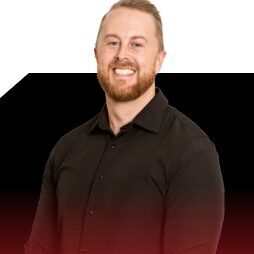Vergent Products applies proven, repeatable processes that work for any product design. The company has a full suite of services that help companies throughout the new product development process. This innovative process removes one of the most significant barriers to product adoption. This is often done by our team of engineers, who have years of experience in engineering and designing new products. Utilizing proven processes to save our clients money and provide more options with the same amount of manufacturing is what we do. Our methods are proven and can ensure that as soon as you give us a design, we will apply our proven methodology and make your dream product a reality.
Early involvement in your design process is key to integrating DFM principles.
If you’ve been looking for a way to implement DFM principles in your products, look no further. DFM stands for Design for Manufacturing and stocks many regulations that will help you incorporate DFM. For example, when you’re designing a product, you need to break it down into smaller pieces (sub-assemblies) to make it easier for manufacturers to assemble it. It’s all about reducing the number of operations and using parts with the same features and specifications. It’s essential to consider these fundamental principles when developing hardware products.
It is well known that many projects fail at the detail design stage, which is often referred to as the critical design review, or CDR. Some of the most common reasons for this include a lack of DFM (design for manufacturability) during the concept phase and the lack of proper engagement with the factory. Some basic actions a design engineer can take to ensure early DFM engagement is to:
– Approach suppliers early on in the design phase.
Get a solid understanding of your suppliers’ capabilities, capacity, and limitations.
– Don’t wait until the last minute to check in with your suppliers.
– Develop physical mockups to understand what works and what doesn’t.
– Work closely with engineering and manufacturing to ensure viable solutions.
Some form of Design for Manufacturability (DFM) is involved in most industries, from clothing to aerospace and even the automotive industry. Having the involvement of designers early in the design process has been gaining traction as the benefits of DFM are realized. Design for sustainability is also gaining traction in the industry as well, although there is more of a focus on the environmental impact rather than the cost of production. There is also concern about how it impacts the usability of the end-user, which is not always considered in DFM but does play a vital role in the global market. It is also essential to consider the disposal of the product and make sure that it is recyclable and has a low environmental impact when disposing of it.
Understanding Of Test Requirements, Firmware, Software, Programming
The main components of hardware testing are Software, Firmware, and Hardware. In today’s world, it’s essential to make sure you’re using the suitable types of hardware, firmware, and software for your product. By doing this, you’ll ensure your product is of the highest quality. In addition, this will help you attract customers who are loyal to your brand, and you’ll be able to retain customers.
Test requirements are how a circuit board is tested before it is assembled. Firmware is the software built into a circuit board to make it perform a specific function. The software is a program installed on the product to give it more functionality. Programming is the process of installing the software onto the product. It is essential to know what these things are because they play a vital role in manufacturing the product. More advanced products need more complex software installed on the circuit boards.
OEM/Client management and understanding of project needs as critical next step in successful client migration
Client management is vital in any business. It’s how you grow as a company. The more clients you have, the more you can learn from them. The same goes for manufacturing. The more clients you have, the more you can learn from them. In an increasingly competitive and globalized economy, Vergent Products is looking for new ways to increase its market share and client base. One of the most effective ways to do this is by developing a high-quality client management system that ensures effective communication and understanding of the project goals; this, in turn, will reduce client turnover, increase repeat business, and strengthen client loyalty and satisfaction.
The management and understanding of OEM/client data and project needs are the next logical step toward a successful client migration. It enables us to have a solid foundation of client information and data. This means understanding the layout of our existing environment and the project needs. The client information and data will tell us what we are moving and what needs to be replaced. It will also tell you exactly where the data is moving and where it will be placed in the new environment.
Vergent is not just a product design and development company, but we also have the expertise and capacity to support the transfer of new product designs into our manufacturing processes. We use proven processes to consistently deliver the highest quality of products and services to our customers. We are committed to helping our customers achieve their business goals. If this sounds like the kind of company you would like to do business with, please contact us anytime at 970.667.8570. We would love to hear from you.

